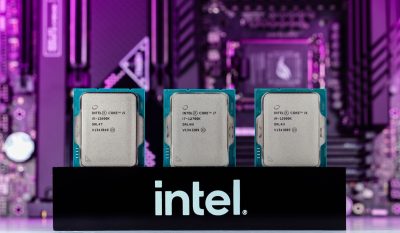Highlights:
- The company wants to use the funding to invest in the development of its product and for business growth by increasing its user list.
- The market of enterprise architecture is witnessing growth, and experts predict the trend will continue.
As organizations constantly evolve their digital architecture, a new type of enterprise software has emerged to help them manage that process. Ardoq – a company that designs enterprise architecture tools to provide businesses a transparent picture of their digital network, including information about who is working on what, when, and where – has closed a round of funding that will help it grow its business. This enterprise architecture startup has bagged USD 125 million in a Series D, increasing its market by over USD 300 million.
Based in Oslo, approximately 30% of Ardoq’s enterprise customer base is from Nordics; the rest are located in Europe and the US. Carlsberg, Conde Nast, and the U.S. Federal Communications Commission are included in the list.
In an interview, the co-founder and CEO of Ardoq, Erik Bakstad, said that they want to use the funds to invest in the development of their product and for business growth by increasing their user list. At present, this enterprise architecture tool is helpful to get an overview of the network and send notifications when something crashes or when there is a potential threat to security or data protection protocol. It will even suggest strategies to fix it. The long-term goal is to develop better predictive analytics and modeling tools to leverage the “digital twin” that Adroq builds of a network.
EQT Growth led this round with contributions from One Pick. This was an effective round for Ardoq as it had raised less than USD 40 million since it was founded in 2013. With the present round of funding, Ardoq is growing exponentially; its ARR increased by 80% in 2021.
Ardoq’s growth represents everything that’s happening in the global enterprise software market overall. The pandemic led to a spike in the need for digital transformation for almost every organization. Irrespective of the business type, size, or industry, SMEs have invested in upgraded applications, hardware, and workflow to leverage cloud services to overcome the challenges of evolving business requirements.
However, this has also led to the emergence of an issue: More intricate, interconnected systems and workforce working less in silos and interdependently, which means if something fails or creates a glitch in some part of the system, it may impact multiple people, teams, and applications.
Enterprise architecture tools are designed to set the house in order by giving an overview of how the system looks and how it works.
This, in turn, becomes insightful data to ensure the smooth running of a network and to feed other functions, for instance, the security teams use digital twin pictures to design and execute better defense strategies and spot loopholes in the networks. Furthermore, if the system crashes or is breached, it will assist in re-developing that part or even the entire network.
Especially for businesses planning to make an I.T. investment, this tool will give a clear picture of where the resources are being allocated and whether it aligns with the business goals. Those managing information at an organization can use enterprise architecture models and data as a part of their network audits to ensure the data usage complies with all the organizational data protection policies.
It does not come as a surprise that multiple players have already entered the area of enterprise architecture. Players include Orbus Software, which was acquired by P.E. firm Silvertree equity in 2021. Another player, LeanIX, raised USD 120 million in 2020 and aimed to grab another raise in 2021, which did not happen, according to Pitchbook data. Enterprise businesses that deliver warehousing, cloud computing, operational and network tools might explore the market opportunities over time.
Many vendors may offer this type of data to their clients to some extent – for instance, Amazon Web Services (AWS) launched a service in November – an argument in favor of a third party managing the database is that it is platform-agnostic and more objective when we talk about forecasting, modeling, and recommending strategic changes or investments.
Bakstad and its co-founder Magnulf Pilskog started this startup because they wanted a solution to fix their problems.
“It was 2013, and we were doing work for large enterprises: banks, insurance companies, financial services, and telcos. In all of them, we struggled with the ‘iceberg problem.’ Companies were making large investments in digital transformation, but they did so on a very small amount of information. The risk of failing was tied to the underlying complexity of those investments. I.T. wasn’t succeeding,” Pilskog remembered. He had founded Miles, an I.T. consultancy, where Bakstad worked as a senior engineer.
Hence, they devised a tool to address this issue. They wanted to figure a way out to map out systems, data, and people “to process [and] understand how things were connected and what the impact would be if you moved one piece,” Pilskog said. “That is why many projects fail, moving one piece and the impact it has. Many people fail to understand that.” He emphasizes the influence of the Excel sheet: “If you change one cell, it impacts all the others.”
The organization has a bit of a mechanical Turk approach to how it works, which expresses more about effective enterprise technology. Ardoq relies a lot on technology and has been built to track and read networks. But Bakstad also highlighted that it also complements that with “workflow surveys” that it carries out consistently with its customers to get users’ perceptions of how things work.
“The fundamentals are here: we have more developers in Europe compared to the U.S., but valuations are still lower in general,” Englesson said, making it “a very attractive market to operate in as an investor.” Ardoq has the potential to stand apart from the crowd, he added, because their enterprise architecture model has immense potential. Additionally, the market value of enterprise architecture tools is estimated approx. €3 billion because it is delivering remarkable results on its strategy already.
Experts’ view:
“Enterprise architecture today is very much about the scaffolding in the organization. Our vision is to combine that with behavioral data and metrics [based on the] digital twin. This means that you can also then run, for example, scenario analysis. We will be accelerating that product roadmap,” Bakstad said.
“Erik and his team have built Ardoq into one of the world’s top enterprise architecture SaaS companies.” Englesson, the partner at EQT growth, said in another statement.













